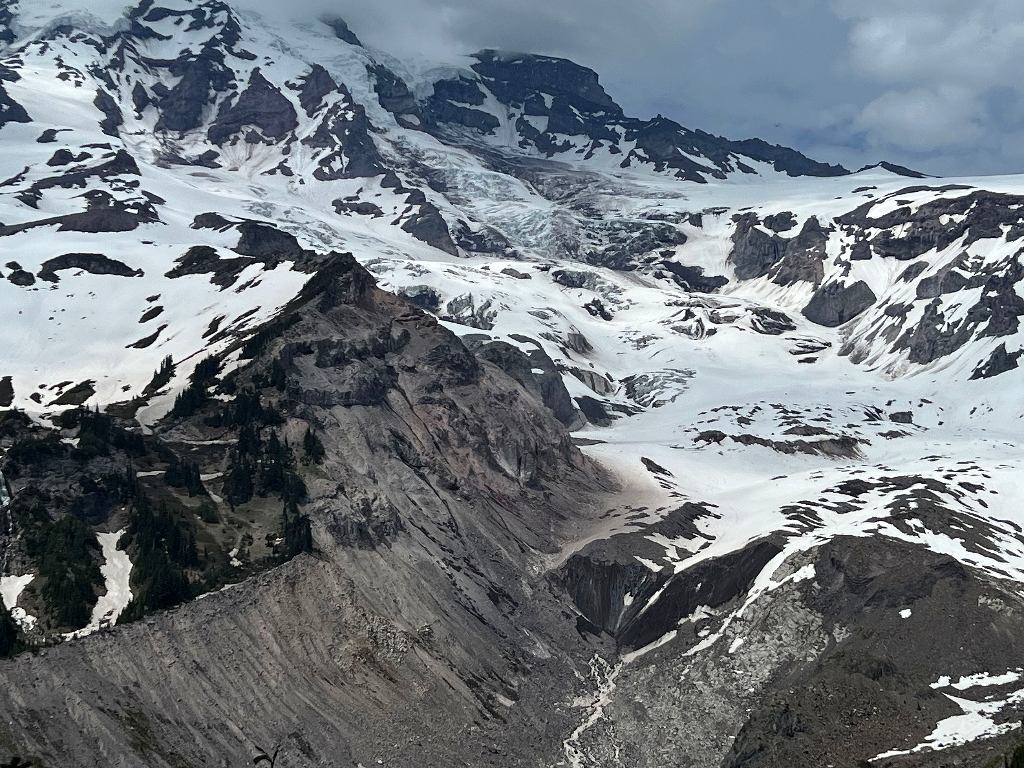
Nisqually Glacier is perhaps the most visited and best surveyed glacier on Mount Rainier. Due to easy access and its prominent location on the southwest side of Mount Rainier near Paradise, the glacier has been studied since the mid-1850s.
In 1857, Lt. August Kautz crossed Nisqually Glacier during an attempt to climb the summit. In 1884, Allen Mason photographed the glacier for the first time, laying the foundation for a photographic record of the Nisqually Glacier that spans over a century.
During the 1930s, Tacoma City Light Department and the U.S. Geologic Survey (USGS) began a series of measurements of glacial surface elevation to determine the impact of the Nisqually Glacier's retreat on water supplies for hydroelectric power production. USGS and park scientists continue to regularly survey the glacier today.
The product of this research is a record of Nisqually Glacier change spanning nearly 150 years. During this time the glacier has retreated and advanced several times, though the general trend has been retreat.
In 1857, Kautz wrote in his journal that the terminus reached a narrow rock channel located underneath the present Glacier Bridge on the road to Paradise. By the time Mason began photographing the glacier, the terminus had retreated up the valley 0.2 miles (0.3 km). Photographs taken early in the 1900s show national park visitors posing near the bridge with the glacier clearly visible over their shoulders. By the 1950s, such photographs were not possible since the glacier had retreated nearly 1.2 miles (2 km) up past a curve in the valley and was lost from view to anyone on the road. An advance in the glacier a few years later made it once again visible from the bridge for a short time. However, by the 1970s the glacier had resumed its retreat and again disappeared from view. Since that time the glacier has gone through a series of minor advances and retreats.
Viewing Nisqually Glacier: The best views of the glacier are from the Nisqually Vista Trail in Paradise, which starts from the lower parking lot. It can also be viewed from Glacier Vista, a short spur off the Skyline Trail.
Nisqually Glacier Statistics as of 2021 (Beason et al., 2023):
- Aerial Extent: 1.584 ± 0.086 square miles (4.102 ± 0.222 km2) (Rank: 6 of 29 glaciers on Mount Rainier)
- Highest Elevation (Head): 14,371 feet (4,380 m)
- Lowest Elevation (Terminus): 5,347 feet (1,630 m)
- Elevation Range: 9,024 feet (2,751 m)
- Length: 3.57 miles (5.74 km)
- Average Slope: 27.00°
- Average Flow Direction (direction the glacier flows towards): South southeast (166°)
- Glacier Type: S - Glacier Head Near Summit
Is there something we missed for this itinerary?
Itineraries across USA


















































